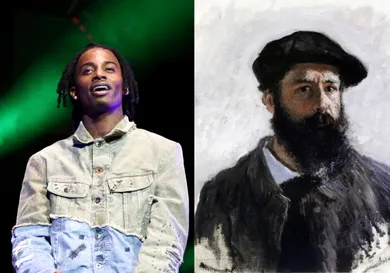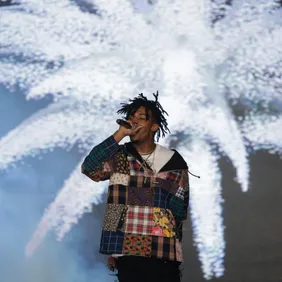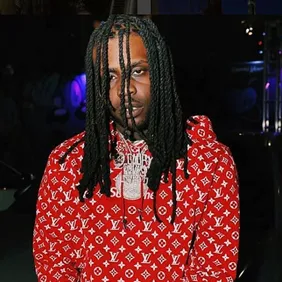The impressionist movement, for the uninitiated, rose to prominence during the 1870s and 1880s. It was considered a radical departure from tradition at the time, “violating” the rules of academic painting. Led by a group of Parisian artists— including Claude Monet, Pierre-Auguste Renoir, and Edouard Manet— Impressionism quickly made its mark with its loosened brushwork, strange visual angles, illegibility, and seemingly amateurish quality. Despite initial rejection from critics and other artists of the time, the movement persisted and went on to birth and inspire Post-Impressionism, and even more artists-- perhaps most famously, Vincent van Gogh. Challenging conventions and defying norms, as the Impressionist movement did in the 19th century, is necessary to inspire new artists, create unique and untread avenues of capturing reality, and push and explore the boundaries of how we comprehend art— and that is exactly what “mumble rap” is currently doing in the hip-hop world.
Conjecture about the term has made it difficult to pin down. At face value, it describes every rapper that mumbles, or else delivers lyrics in a somewhat incoherent manner. Due to its conflation with “Soundcloud rap,” it can also describe any artist with face tattoos, brightly colored hair, and a substantial Instagram following. As it stands, mumble rap is less an accurate description of a hip-hop subgenre and more a bargain umbrella term tossed around for the sake of simplicity and categorization. Even the artists considered mumble rappers don’t take the term very seriously. "A whole bunch of 'ayes' and a whole bunch of 'yeahs,'” exclaimed Lil Uzi Vert about being described as a mumble rapper. “That's it. That's all I do. I say yeah. I tell myself that I'm not gon' go over 80. I say like 79 yeahs and it works. We what you call a mumble rappers. So you say yeah after everything and make it rhyme no matter what it is." Despite its use as a pejorative, and Uzi’s infamous verse on “Bad and Boujee” (in which he starts his part with an emphatic "yeah yeah yeah yeah yeah"), mumble rap isn’t and shouldn’t be defined by what’s often portrayed as laziness and a lack of lyricism: it’s a modern-day Impressionist movement and critics should be paying attention.
--
Unlike other artworks in the 19th century, Monet’s Impression, Sunrise sought to bring the feelings and emotions a scene triggered to life, rather than just tell a story through a detailed landscape. Through short, thick strokes of paint, distinct applications of color, and a heavy emphasis on natural light, Monet was able to transform a simple misty maritime scene into a poetic expression of one’s perception of nature: a feature that became a foundation of the movement. Impressionists were disinterested in idealized forms and instead captivated on showcasing the world as they saw it, filled with its many imperfections. If Impression, Sunrise is considered the quintessential symbol of 19th-century Impressionism, Playboi Carti’s debut album Die Lit perfectly encapsulates everything exceptional about mumble rap. Impressionists painted ordinary subject matters, but experimented with how to bring it to life. Carti has accomplished the same with Die Lit: the sex, violence, and drugs are there, but they exist as an accompaniment to unconventional song structures, a fever dream of the experimental yet infectious production, nonsensical adlibs existing as crucial song components, and high-pitched cadences.
If you listen to “Flatbed Freestyle,” the 14th song off Die Lit, you get a taste of Impressionism. Although the subject matter of the song is run of the mill (drugs, money, guns, and women) and the beat doesn’t change, it’s how it’s packaged that stands out. Carti’s warbly vocals at times make it impossible to understand the lyrics, but that doesn’t matter. The song draws something from you, whether it’s because of the high-pitched baby voice, silly adlibs, or peculiar ambiance. As the song starts, Carti flawlessly riding the beat gives off a relaxed and triumphant vibe, yet by the end of the song you’re left feeling sad and emotional as the refrain/outro hits you right in the gut. And that’s all without having to know what the song is about. As strange as it may sound, this isn’t a song you listen to for the lyrics. It’s an Impressionist take on presenting what you’re accustomed to in a fresh and unique manner.
Playboi Carti isn’t the first mumble rapper: Monet had Eugène Delacroix and J. M. W. Turner, and Carti is following in path paved by the likes of Chief Keef, Lil Wayne, and Young Thug. Even now, mumble rap is still evolving through the music of Gunna, UnoTheActivist, SahBabii, Thouxanbanfauni, and a collection of talented young artists. Sheck Wes has even shown that mumble rap can score a top 10 hit on the Billboard Hot 100. “Mo Bamba” is an unlikely platinum hit, due to its simplicity, rawness, abrasiveness, and uncommon song structure (chorus > chorus > verse > chorus > outro)— yet it's managed to reach new heights thought unimaginable. Let me reiterate, Carti did not invent mumble rap, nor has he claimed to have, but his music has helped refine what this mumble rap/Impressionist movement is capable of, and set the blueprint for its direction.
During an interview with Hot 97 in 2016, Wiz Khalifa coined the term “mumble rap” when describing artists who “don’t want to rap,” specifically mentioning Lil Uzi Vert and Lil Yachty. A few months after the Wiz interview, Pete Rock took a stab at Lil Yachty for his disparaging comments about Notorious B.I.G. In an Instagram caption meant as a sub towards Yachty, Pete Rock wrote “Im obviously passionate about good music and good lyrics. Cant understand the mumble rap shit da hell is that?” The term mumble rap, intended as an insult, was now cemented in rap history. Louis Leroy, one of the most notorious art critics of the 19th century, published a scathing review of the first independent group show of Impressionist art held in France. After looking at Monet’s Impression, Sunrise, Leroy wrote "Impression! Wallpaper in its embryonic state is more finished!" In lambasting the art and its “unfinished quality,” Leroy not only unwittingly helped provide a clear identity for Impressionist painters, he also christened the movement and solidified it in art history. What intended to be an insult ended up much different than the critic intended.







